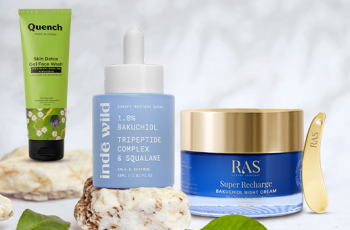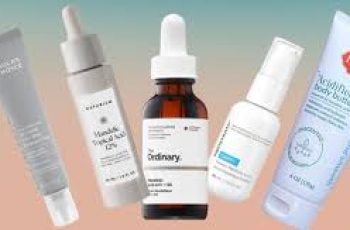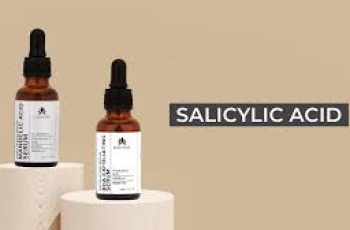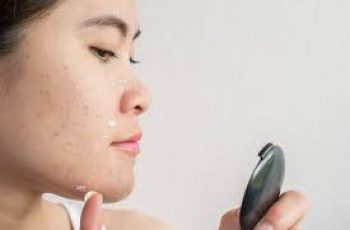
Can I Use Hyaluronic Acid with Retinol and Vitamin C?
It’s no secret that hyaluronic acid, retinol, and vitamin C are some of the most popular and effective ingredients in modern skincare.
But with great power comes great responsibility—and if you don’t know how to layer these active ingredients properly, you could end up with irritation, redness, dryness, or all three.
So, can you safely use hyaluronic acid with retinol and vitamin C?
Yes, you absolutely can—as long as you know when and how to use them.
Let’s break it down and answer your most frequently asked questions to help you build a routine that gets results without upsetting your skin.
How Do Retinol, Vitamin C, and Hyaluronic Acid Work Together?
Each of these ingredients plays a unique role in your skincare routine, and when used properly, they complement each other beautifully.
Vitamin C (L-ascorbic acid or derivatives):
A powerful antioxidant that brightens skin
Fights free radical damage from sun and pollution
Stimulates collagen and fades dark spots
Retinol (Vitamin A derivative):
Encourages cell turnover and collagen production
Reduces fine lines, wrinkles, and acne
Improves skin tone and texture
Hyaluronic Acid:
A hydrating humectant that draws moisture into the skin
Plumps and smooths the complexion
Helps reduce irritation and flakiness from potent ingredients like retinol
Used together correctly, hyaluronic acid hydrates, vitamin C protects and brightens, and retinol renews and smooths.
What’s the Best Way to Use These Ingredients in a Skincare Routine?
To avoid irritation and maximize results, you need to understand timing and layering.
? Morning Routine:
Cleanser
Vitamin C serum (protects skin during the day)
Hyaluronic acid (locks in hydration)
Moisturizer
SPF 30+ (crucial when using vitamin C and retinol!)
? Evening Routine:
Cleanser
Hyaluronic acid serum (applied to damp skin)
Retinol (serum or cream)
Moisturizer (preferably something calming and barrier-repairing)
? Bonus tip: If you’re new to retinol, start with 2-3 nights a week and gradually build up to daily use to avoid irritation.
Which Comes First: Hyaluronic Acid, Vitamin C, or Retinol?
Let’s clarify this by looking at both timing (AM vs. PM) and product consistency (thin to thick).
✔️ Morning:
Vitamin C goes first (usually a thin serum)
Hyaluronic acid comes next (often a thicker gel serum)
Followed by your moisturizer and sunscreen
✔️ Evening:
Hyaluronic acid first (on damp skin)
Retinol second (as it’s usually a cream or oil-based serum)
Finish with moisturizer to lock everything in
Always remember: Apply products from thinnest to thickest for best absorption.
Should I Use Hyaluronic Acid Before or After Retinol?
Use hyaluronic acid before retinol—this helps buffer the retinol’s strength and protects the skin barrier. Think of hyaluronic acid as your skin’s hydration insurance.
When you apply it to slightly damp skin, it acts like a sponge, pulling in water and prepping your skin to better absorb retinol, without the dreaded dryness or irritation.
Can I Use Vitamin C and Retinol Together?
Technically, yes—but for most skin types, it’s not recommended to layer them at the same time. Here’s why:
Both can be drying or irritating, especially for sensitive skin
They work best in different pH environments
Layering them may reduce effectiveness or cause redness, flaking, or breakouts
Best approach:
Use vitamin C in the morning (for antioxidant protection and glow)
Use retinol at night (for skin regeneration while you sleep)
This way, you get the benefits of both ingredients—without overwhelming your skin.
Should Retinol Be Used Before or After Serum?
It depends on the type of serum you’re using.
If the serum is hydrating or soothing (like hyaluronic acid or niacinamide), apply it before retinol.
If the serum is active or exfoliating (like an AHA/BHA serum), avoid layering it with retinol altogether—this can irritate and damage your skin.
✔️ Layering tip:
Cleanse, Hydrating serum (HA or niacinamide), Retinol, Moisturizer
Can Hyaluronic Acid Be Mixed with Retinol?
Yes, and it’s a match made in skincare heaven.
Hyaluronic acid:
Hydrates deeply
Buffers the retinol effect
Soothes dryness, tightness, and peeling
When used together, retinol works on cell turnover while hyaluronic acid ensures your skin stays hydrated and resilient.
Should I Apply Hyaluronic Acid Before or After Moisturizer?
Before.
Apply hyaluronic acid to slightly damp skin, then follow up with a moisturizer to seal it in. Without this sealing step, HA can pull moisture out of your skin—especially in low humidity environments.
? Hyaluronic acid = hydration magnet
? Moisturizer = hydration seal
Together, they keep your skin smooth, plump, and protected all day.
Should I Use SPF When Using Retinol and Vitamin C?
Yes—every single day.
Even if it’s cloudy, raining, or you’re indoors. Here’s why:
Vitamin C makes your skin more sensitive to sunlight
Retinol increases photosensitivity, which can cause sunburn, irritation, and hyperpigmentation if unprotected
Apply a broad-spectrum sunscreen (SPF 30 or higher) every morning after your moisturizer. Reapply every 2 hours if you’re outdoors.
Final Thoughts: Can You Use Hyaluronic Acid with Retinol and Vitamin C?
Yes, you can! But timing, product order, and balance are essential.
?️ Here’s your cheat sheet:
Ingredient When to Use Order in Routine Key Benefits
Vitamin C Morning After cleansing Brightens, protects, firms
Hyaluronic Acid AM + PM After cleansing/toner Hydrates, plumps, soothes
Retinol Evening After HA Smooths, regenerates, fights aging
Moisturizer AM + PM Last step Locks in hydration and actives
SPF Morning Final step Protects against UV + free radicals
With consistency and patience, this trio can completely transform your skin—giving you that hydrated, smooth, radiant glow we all want.
If you’re unsure where to start or have sensitive skin, always do a patch test or consult with a dermatologist.
And if you found this guide helpful, don’t forget to follow us on Instagram or send a DM—we love answering your skincare questions!



